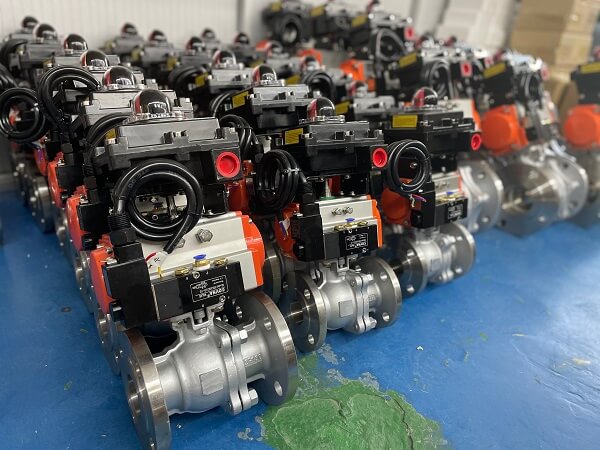The Use Characteristics And Structure Characteristics Of The Valve
1. Operating characteristics of valves
Characteristics of the main valve to determine the use of performance and use of the scope, the use of the characteristics of the valve are: valve type (closed-circuit valve, control valve, Safety Valve, etc.); product type (gate valve, globe valve, butterfly valve, ball valve, etc.); material of main parts of valve (body, cover, stem, disc, sealing surface); valve drive mode, etc.
2. Structural characteristics
Structural characteristics determine some of the structural characteristics of valve installation, repair, maintenance, and other methods structural characteristics include: the structural length and overall height of the valve, and pipe connection form (flange connection, thread connection, clamp connection, external thread connection, welding end connection, etc.); sealing surface form (insert ring, thread ring, build-up welding, spray welding, valve body) ; valve stem structure form (rotating rod, lifting rod) and so on.
How To Select The Valve
1. Specify the use of the valve in the equipment or device, determine the working conditions of the valve: applicable media, working pressure, working temperature, and so on.2. Determine the nominal size and connection of the pipe to the valve: flanges, threads, welds, etc. . for example, select the inlet globe valve and make sure that the connection is flanged.3. Determine the way to operate the valve: manual, electric, electromagnetic, pneumatic or hydraulic, electro-hydraulic linkage, etc. ; for example, the choice of manual stop valve.4. According to the medium, working pressure and working temperature, the materials of the valve shell and inner parts are determined: cast steel, carbon steel, stainless steel, alloy steel, stainless acid-resistant steel, gray cast iron, malleable cast iron, ductile iron, copper alloy, etc. for example, globe valves are made of cast steel.5. Select valve type: ball valve, butterfly valve, etc. .6. Setermine the type of valve: gate valve, globe valve, ball valve, butterfly valve, throttle valve, safety valve, pressure reducing valve, steam trap, etc.kill. determine valve parameters: for automatic valves, according to different needs, first determine the allowable flow resistance, discharge capacity, back pressure, and then determine the nominal diameter of the pipeline and valve seat hole diameter.8. Setermine the selected valve geometric parameters: structural length, flange connection form and size, after opening and closing the valve height direction of the size, connecting the size and number of bolt hole, the overall size of the valve.9. Use the available information: valve product catalogue, valve product samples, etc. to select the appropriate valve products.
Select The Basis Of The Valve
1. Select the use of the valve, operating conditions and operating control mode.2. The nature of the working medium: working pressure, working temperature, corrosion performance, whether it contains solid particles, whether the medium is toxic, whether it is flammable, explosive medium, medium viscosity, etc. medium and environment inflammable, explosive, generally choose explosion-proof solenoid valve; for example, to choose germany lit ball valve, medium containing solid particles, generally choose v hard seal ball valve.3. Requirements for valve fluid characteristics: flow resistance, discharge capacity, flow characteristics, seal grade, etc. .4. Installation size and outline size requirements: nominal size, pipe connection and connection size, outline size or weight limit, etc. .5. Additional requirements for reliability of valve products, service life and explosion-proof performance of electrical installations (note when selecting parameters: If the valve is to be used for control purposes, the following additional parameters must be determined: operating method, maximum and minimum flow requirements, pressure drop in normal flow, pressure drop at closure, maximum and minimum inlet pressure of the valve).6. According to the above selection of valve basis and steps, reasonable and correct selection of valves must also be a detailed understanding of the internal structure of various types of valves, in order to be able to select the preferred valve to make the right choice.
The final control of the pipeline is the valve. The opening and closing part of the valve controls the flow direction of the medium in the pipeline. The shape of the valve passage makes the valve have certain flow characteristics.
Post time: Nov-25-2021





